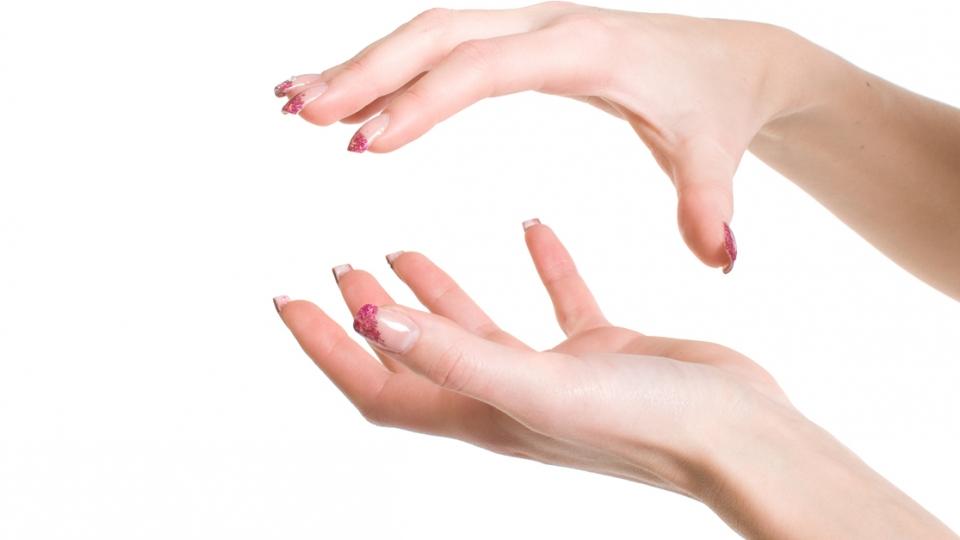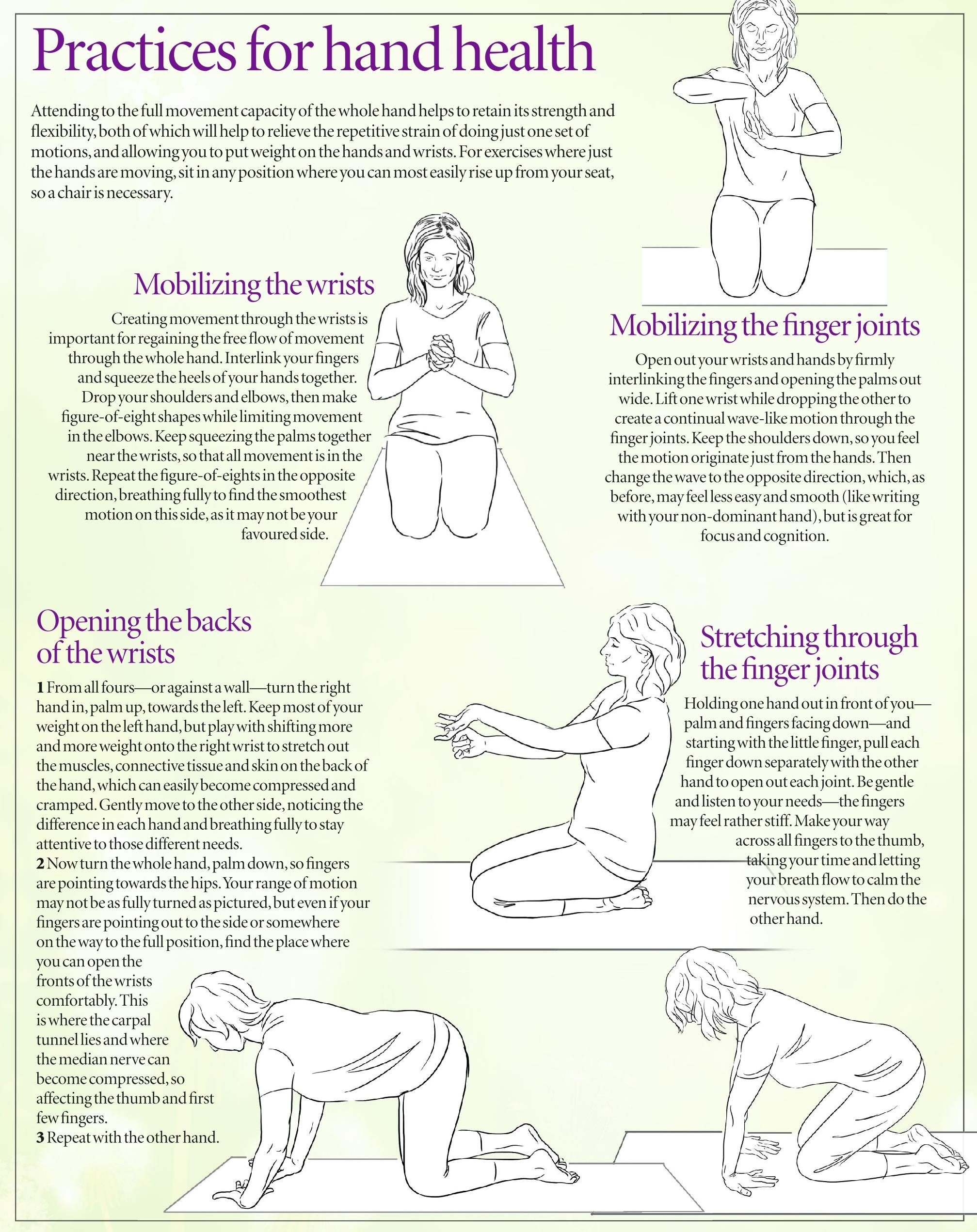
How we use our hands has shaped how we work, express ourselves and play, but the recent rise in the use of keyboards and smartphones has led to a rise in hand, wrist and finger issues. In fact, the risk of carpal tunnel syndrome has been shown to increase with using a keyboard for just over 20 hours per week.1
But even if you use more traditional tools for crafts, woodwork and gardening, you may also find yourself prey to finger, hand and wrist problems if you’re doing similar actions over and over again. Indeed, the repetitive strain injury (RSI) that arises as a result of a constantly repeated motion is a risk factor for arthritis in the finger and wrist joints.
As soon as you feel yourself stiffening, stop immediately and move your hands in a different way. Tingling is a common first sign, telling us we need to increase mobility throughout the hand wherever nerves have become compressed and blood flow compromised. Any signs like aches, numbness, cramps, weakness and tenderness need to be listened to and, if they don’t abate when we change movement, warrant investigation by an osteopath or physiotherapist.
The hands as part of the whole
Our hands are an extension of the whole body’s expression as, through fascial connective tissue, they are connected to every other part of the body. According to Thomas Myers’ system of ‘Anatomy Trains’ (Anatomy Trains, Churchill Livingstone, 2014), ‘arm lines’ start between the fingertips to join at the wrists, then run up to the shoulders, where they reach out to the collarbones and chest at the front, and also to parts of the back, reaching down as far as the pelvis.
So the movement of our hands and wrists can affect how we move the rest of our body during exercise, and vice versa: tightness in the hands, feet and jaw can ripple back towards the centre, just as stress in the belly can affect the peripheral limbs.
Stress and the hands
Stress can really have an impact on hands, curling them in or even making a fist in preparation of a fight. Well-documented trauma symptoms are numbness in the fingers, cold hands and sweaty palms, as part of the fight-or-flight (sympathetic nervous system) response is to restrict blood flow in the periphery to bring it back towards the centre, the brain and larger leg muscles of movement. Finger fine motor skills are impaired as stress demands larger motions of defence.
In a 1992 study published after the recent rise of both keyboard work and psychosocial stress in the workplace, over 900 newspaper employees (with no previous injuries) filled out detailed questionnaires while their workplaces were examined. Findings reported that “psychosocial factors were more important predictors of cumulative trauma disorders of the hand and wrist” in participants than the biomechanical criteria studied.2 This suggests that the hands and wrists of a stressed person with tight tissues, as with any other body tissues, are more prone to injury.


What do you think? Start a conversation over on the... WDDTY Community